The Ghost Chieftain
Hi everyone! Welcome back to The Knowledge Pool!
It's been a little while since my last article, and for those of you who don't remember, I promised you a Part 2 to my lands series. However, given that we're approaching the spookiest of holidays, I thought it only fitting to push back the Omnath, Locus of RageOmnath, Locus of Rage installment another week so that we can dig into the darker side of Magic.

As a horror connoisseur, Halloween is one of my favorite times of the year, and Magic: the Gathering has always offered a creative and creepy spin to their spells, particularly in the older cards. I've always loved cards like Season of the WitchSeason of the Witch and All Hallow's EveAll Hallow's Eve, and something about the older art style just feels more menacing. Cards like these make me nostalgic for a time in Magic during which I didn't even play, when the cards weren't as polished and the monsters were straight out of a storybook. The Timmy in me can appreciate the holiday too, taking the chance to command creatures that have cheated death.
So in reference to the holiday, today we'll be inspecting one of my oldest and favorite commander decks, the prince of darkness, lord of the undead, Karador, Ghost ChieftainKarador, Ghost Chieftain.
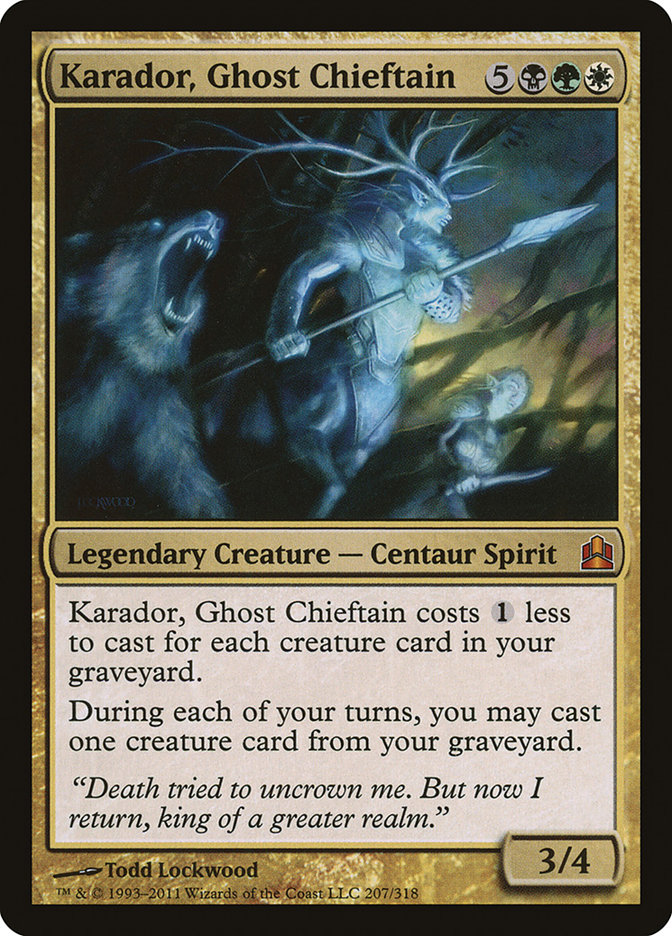
Let's start with a bit of context for this list. I first began playing Magic during the Zendikar block, but I didn't become a consistent player until the release of New Phyrexia. At the time I was still being introduced to the ocean of mechanics available, and the words "dredge" and "mill" meant nothing to me. Even still, I found myself drawn to reanimator strategies, and I vividly remember doing my best to piece together a deck based around Sheoldred, Whispering OneSheoldred, Whispering One. The concept of formats was still foreign to me, and I remember clumsily adding cards like ZombifyZombify to my deck because its simplistic design was easy enough for me to follow. In the end, as I dove into the standard metagame, the Sheoldred deck I dreamed of never materialized, but the concepts I had been brainstorming were always in the back of my head. I think these initial deck building projects are part of the reason Commander always appealed to me, offering me a format with few boundaries and the ability to take a strategy to its most excessive conclusion.
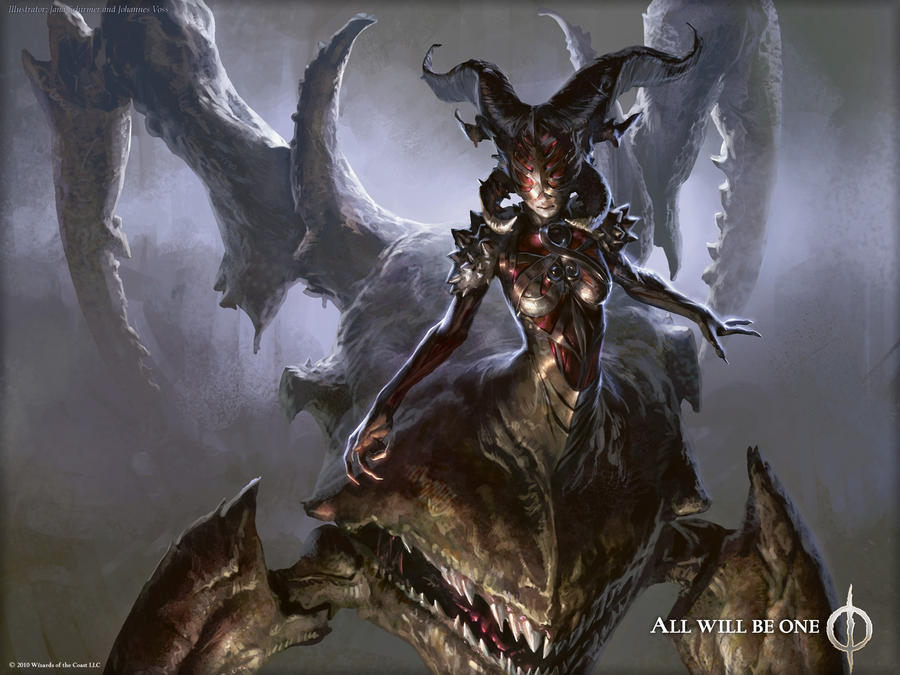
Despite always having a fancy for necromancy, I neglected to build such a deck until Commander 2015. I became obsessed with Meren of Clan Nel TothMeren of Clan Nel Toth, and my desire to revisit a reanimator strategy was reignited. But the more I bounced from build to build, my Meren deck shifted vision and transformed into a staxy monstrosity aiming to grind my opponents into dust. Meren was, and still is, my most competitive Commander deck, but it never scratched the reanimation itch. So to satiate my necromantic desires, I found a new commander: Karador.
Karador was introduced to the Magic world in the Commander 2011 set, and the format as a whole was just beginning to break into the mainstream. At the time, the Commander format was a wild west of deck building, and the core concepts that many of us take for granted when approaching the brewing process were not as widely known and discussed. After years of maturation, it's become clear that Commander 2011 offered some of the most brutal commanders in the format, with Animar, Soul of ElementsAnimar, Soul of Elements, Ghave, Guru of SporesGhave, Guru of Spores, The MimeoplasmThe Mimeoplasm, and Kaalia of the VastKaalia of the Vast still wreaking havoc in Commander groups to this day. Karador is arguably as powerful as these commanders, if not more so, with more competitive iterations representing one of the most potent strategies in the format.
Grave Focus
With the recent release of Muldrotha, the GravetideMuldrotha, the Gravetide, Karador's primary ability of allowing us to cast a creature from our graveyard each turn has lost some of its uniqueness. However, while Karador's recursion ability is more limited in scope, his cost reduction ability makes him very resilient, and often times very undercosted. This means we can almost always expect to have our commander at our fingertips, and it means we can start generating value from creature abilities early and often. Both of these characteristics make Karador a natural home for the Dredge mechanic, and the more cards we dump into the yard, the more options we will have for taking over a game. For Karador, the adage that the graveyard is simply an extension of your hand is especially true.
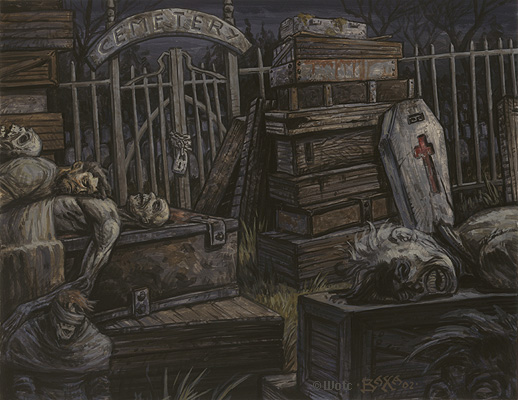
I mentioned how Meren ended up vastly different than I intended, and I also eluded to the idea that Karador can be a particularly oppressive, combo-focused, and competitive commander. Before we start looking at my build for Karador, I want to introduce two ground rules I set for myself when I began building this deck, so you might better understand the context for my design. First and foremost, my version of Karador is a value-centric reanimator deck. This means that my build aims to take over a game with its creature presence, grinding down our opponents with each creature cast, and then reanimating giant monsters to win the game. Second, while there will be combos in the deck, they are included as a means of ending a game that has dragged on for to long, or else can't be won on the battlefield. I feel as though these two points have helped keep my version of Karador on a level that's powerful and not oppressive, while also giving us just enough muscle to not be entirely outclassed when facing more competitive decks.
With these ideas and deck building goals in mind, I present to you my Karador deck:
Karador, Ghost Chieftain
View on ArchidektCommander (1)
- 1 Karador, Ghost ChieftainKarador, Ghost Chieftain
Creatures (38)
- 1 Birds of ParadiseBirds of Paradise
- 1 Spore FrogSpore Frog
- 1 Stitcher's SupplierStitcher's Supplier
- 1 Viscera SeerViscera Seer
- 1 Blood ArtistBlood Artist
- 1 Fauna ShamanFauna Shaman
- 1 Hermit DruidHermit Druid
- 1 Qasali PridemageQasali Pridemage
- 1 Saffi EriksdotterSaffi Eriksdotter
- 1 Sakura-Tribe ElderSakura-Tribe Elder
- 1 Satyr WayfinderSatyr Wayfinder
- 1 Zulaport CutthroatZulaport Cutthroat
- 1 Eternal WitnessEternal Witness
- 1 Fiend HunterFiend Hunter
- 1 Knight of AutumnKnight of Autumn
- 1 Midnight ReaperMidnight Reaper
- 1 PlaguecrafterPlaguecrafter
- 1 Ramunap ExcavatorRamunap Excavator
- 1 Recruiter of the GuardRecruiter of the Guard
- 1 Stinkweed ImpStinkweed Imp
- 1 Wood ElvesWood Elves
- 1 Yavimaya ElderYavimaya Elder
- 1 Disciple of BolasDisciple of Bolas
- 1 Ravenous ChupacabraRavenous Chupacabra
- 1 Acidic SlimeAcidic Slime
- 1 Archon of JusticeArchon of Justice
- 1 Doom WhispererDoom Whisperer
- 1 Golgari Grave-TrollGolgari Grave-Troll
- 1 Karmic GuideKarmic Guide
- 1 ReveillarkReveillark
- 1 Sidisi, Undead VizierSidisi, Undead Vizier
- 1 Underrealm LichUnderrealm Lich
- 1 Sun TitanSun Titan
- 1 Elesh Norn, Grand CenobiteElesh Norn, Grand Cenobite
- 1 Rune-Scarred DemonRune-Scarred Demon
- 1 Sheoldred, Whispering OneSheoldred, Whispering One
- 1 Ashen RiderAshen Rider
- 1 Razaketh, the FoulbloodedRazaketh, the Foulblooded
Sorceries (13)
- 1 ReanimateReanimate
- 1 Demonic TutorDemonic Tutor
- 1 Life from the LoamLife from the Loam
- 1 Nature's LoreNature's Lore
- 1 Buried AliveBuried Alive
- 1 Toxic DelugeToxic Deluge
- 1 VictimizeVictimize
- 1 DamnationDamnation
- 1 Jarad's OrdersJarad's Orders
- 1 Wrath of GodWrath of God
- 1 Cleansing NovaCleansing Nova
- 1 Living DeathLiving Death
- 1 Unburial RitesUnburial Rites
Artifacts (5)
- 1 SkullclampSkullclamp
- 1 Sol RingSol Ring
- 1 Altar of DementiaAltar of Dementia
- 1 Ashnod's AltarAshnod's Altar
- 1 Birthing PodBirthing Pod
Enchantments (3)
- 1 Animate DeadAnimate Dead
- 1 Sylvan LibrarySylvan Library
- 1 Greater GoodGreater Good
Instants (2)
- 1 EntombEntomb
- 1 Swords to PlowsharesSwords to Plowshares
Lands (38)
- 1 Bojuka BogBojuka Bog
- 1 Bountiful PromenadeBountiful Promenade
- 1 Command TowerCommand Tower
- 1 Evolving WildsEvolving Wilds
- 1 Exotic OrchardExotic Orchard
- 1 Fetid HeathFetid Heath
- 5 ForestForest
- 1 Geier Reach SanitariumGeier Reach Sanitarium
- 1 Godless ShrineGodless Shrine
- 1 High MarketHigh Market
- 1 Isolated ChapelIsolated Chapel
- 1 Krosan VergeKrosan Verge
- 1 Murmuring BoskMurmuring Bosk
- 1 Overgrown TombOvergrown Tomb
- 1 Path of AncestryPath of Ancestry
- 4 PlainsPlains
- 1 Reflecting PoolReflecting Pool
- 1 Sandsteppe CitadelSandsteppe Citadel
- 1 Sunpetal GroveSunpetal Grove
- 6 SwampSwamp
- 1 Temple GardenTemple Garden
- 1 Terramorphic ExpanseTerramorphic Expanse
- 1 Twilight MireTwilight Mire
- 1 Urborg, Tomb of YawgmothUrborg, Tomb of Yawgmoth
- 1 Wooded BastionWooded Bastion
- 1 Woodland CemeteryWoodland Cemetery
The Breakdown
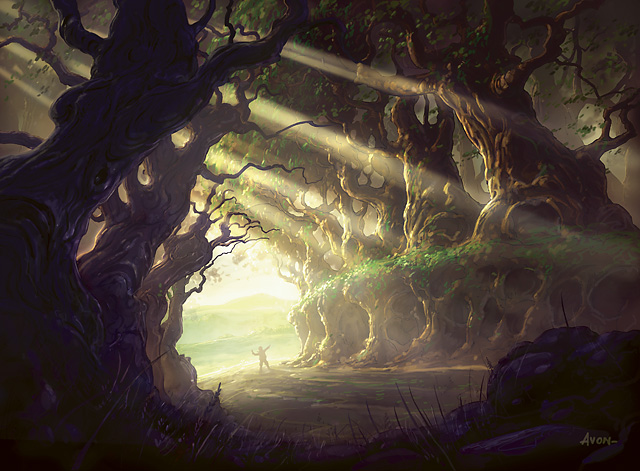
My version of Karador has a modest curve, with an average CMC of 3.44. This is in large part due to the fact that the bulk of the deck is made up of cards costing 1-3 mana. A lot of reanimator strategies might opt for a heavier top end so that they have more options for their reanimation targets. However, because Karador requires us to "cast" our creatures from the graveyard, a large chunk of options on the lower end is important so that we have plays in the early game.
Another element that's immediately obvious about this build is the density of creatures. We are running 38 creatures so that we can enable Karador quickly once we begin dredging. This number could be increased for more consistency, but I wouldn't go too much lower. For a deck like this, we want to limit the number of noncreature spells we include, and instead focus on creature ETB abilities. While a card like Grisly SalvageGrisly Salvage might perform perfectly well in a deck like this, we're going to play Satyr WayfinderSatyr Wayfinder instead for our dredging purposes. And since we have a significant chunk of low costed creatures, we can reliably sacrifice them and recast them with Karador to achieve a near constant stream of value.
For the most part, the noncreature spells we're playing are abilities that we cannot readily achieve on creatures, or else are too efficient at their cost to be ignored. The three primary categories for these spells in this deck are reanimation, Wraths, and sacrifice outlets. I pointed out that Karador's ability is most effective for bringing back smaller creatures. This isn't to say that we can't cast Rune-Scarred DemonRune-Scarred Demon with Karador, but doing so will likely take up the bulk of our mana equity. For this reason, a suite of reanimation spells is important so that we can cheat costs on these bigger creatures. Wraths are also an important aspect of a deck like this, as we're not afraid of killing our own creatures if it means our opponents will take the brunt of the damage. I've tried to aim for more efficient Wrath abilities in this deck so that we can control the board in the early game while we're still building up our graveyard. Finally, while there are many potent creatures that can function as sac outlets, the most busted ones tend to come in the form of artifacts and enchantments. If we can stick an Ashnod's AltarAshnod's Altar or Greater GoodGreater Good, we will likely be within reach of enough resources to take over a game. Sac outlets are also important in a deck like this because we would almost always rather have our creatures end up in the graveyard than in exile, so having a free option for sacrificing them in response to a Merciless EvictionMerciless Eviction is ideal.

The last element about this deck I would like to point out is the density of new cards. The new Guilds of Ravnica set has offered us a bounty of Abzan-colored value creatures that I'm excited to exploit in this list. Obviously, given that the cards are so new, it's hard to guarantee their effectiveness, but I feel pretty comfortable including Knight of AutumnKnight of Autumn over Reclamation SageReclamation Sage, Midnight ReaperMidnight Reaper over Grim HaruspexGrim Haruspex, and PlaguecrafterPlaguecrafter over Fleshbag MarauderFleshbag Marauder.
Disclaimer: Three color reanimation strategies, especially those in the Abzan colors, have a wealth of potential options for reanimation targets and reanimation spells. The cards I've included are those that I've had the most success with so far.
For this deck, the breakdown of abilities is rather straightforward. We have our enablers as represented by dredge spells, we have our power in reanimation spells, and we have our supporting cast in the form of removal. Let's take a look at our options for dredging.
To Fill a Cemetery
Dredge and Tutors
View on ArchidektDredge (9)
- 1 Stitcher's SupplierStitcher's Supplier
- 1 Altar of DementiaAltar of Dementia
- 1 Hermit DruidHermit Druid
- 1 Life from the LoamLife from the Loam
- 1 Satyr WayfinderSatyr Wayfinder
- 1 Stinkweed ImpStinkweed Imp
- 1 Doom WhispererDoom Whisperer
- 1 Golgari Grave-TrollGolgari Grave-Troll
- 1 Underrealm LichUnderrealm Lich
Tutors (4)
- 1 EntombEntomb
- 1 Fauna ShamanFauna Shaman
- 1 Buried AliveBuried Alive
- 1 Jarad's OrdersJarad's Orders
Looking at these lists, it's clear that I'm using the word "dredge" liberally. In most instances, when I refer to "dredge," I'm describing any spell that lets me dump cards from the top of my deck into the graveyard.
One of my favorite new additions to this section is Stitcher's SupplierStitcher's Supplier, as she represents incredible dredging potency while doubling as sacrifice fodder for the bargain price of a single black mana. Satyr WayfinderSatyr Wayfinder falls into a similar category, letting us dig for our next land drop while also stirring our graveyard stew. These abilities might not seem like much on the surface, but have the opportunity to replay them so cheaply with Karador will very quickly allow us to load up our graveyard to the point that we can begin to control the game.
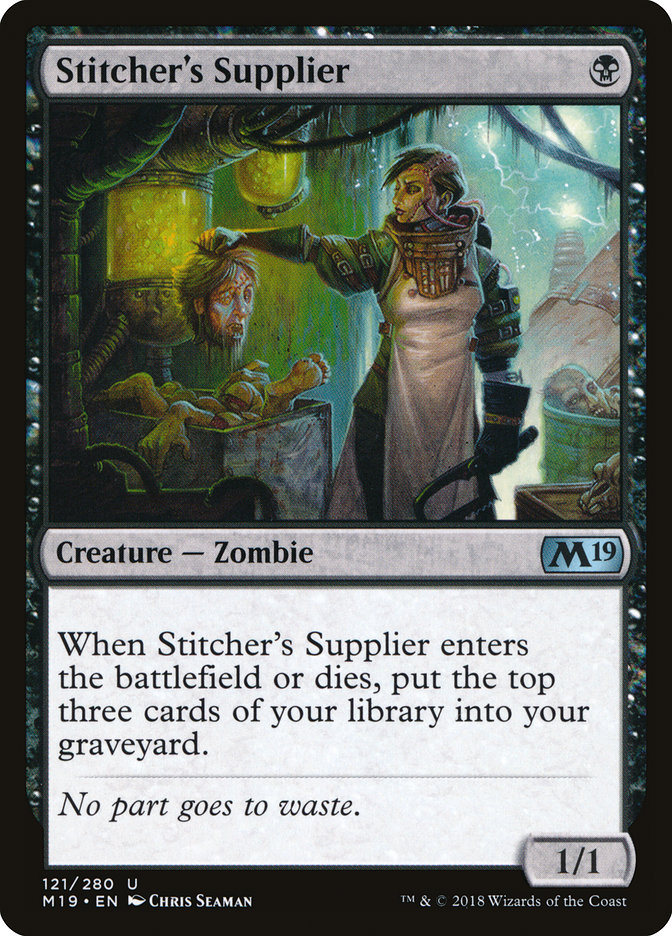
The heavy hitters of our dredge category are Altar of DementiaAltar of Dementia, Hermit DruidHermit Druid, and Life from the LoamLife from the Loam.
Altar is one of this deck's best sacrifice outlets for several reasons. Altar offers the ability to sacrifice creatures for free, and then lets us dump cards into the graveyard. These two abilities alone is enough to warrant Altar's inclusion, but it's also a powerful combo piece. The bulk of the combos in this deck rely on creating infinite instances of creature deaths, and a key element of these loops is a sac outlet. If Altar is our sac outlet for these combos, we can instead target our opponents, milling them out completely.
Hermit Druid is a feared card in Commander for good reason. Most decks playing Druid are using it as a primary combo piece, and admittedly, we may have trouble convincing most playgroups that our intentions are a bit more innocent. For us, Druid is simply an enabler, and one of the best means of dredging in the deck. Since we only have 15 basic lands, each activation of Druid is likely to dump a significant chunk of our deck into the graveyard, and if we get a little lucky, it could completely load our graveyard in a single activation.
Finally, Life from the Loam is a classic component of most dredge packages. Because it doesn't require us to target lands, we can play it even if we have no lands in the graveyard so that we can begin the dredging process on the following turn. Once we have begun dredging a bit, however, Loam represents an never-ending source of value that will ensure we always have land drops and/or cards to discard. Establishing Loam in the early game will help ensure that we're able to keep up with almost anyone at the table.
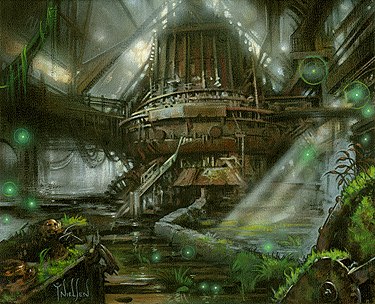
I want to highlight two new additions to the dredging package: Doom WhispererDoom Whisperer and Underrealm LichUnderrealm Lich. Both of these cards were incredibly exciting to me when they were spoiled, and I'm itching to be able to test them out in an actual game.
With enough life investment, Doom Whisperer can allow us to plow through our deck until we find the right card to leave on top. More importantly is the fact that Surveil lets us dump the remaining cards into the yard. These factors should make Whisperer a potent reanimation enabler, while also being a 6/6 Flying Trampler on its own.
I've heard different arguments so far as to the playability of Underrealm Lich in a reanimator strategy. On one hand, Lich is a five mana "do nothing" creature, with a relatively tiny body for the cost. On the other, Underrealm Lich should turn EACH of our draws into a situationally better Sylvan LibrarySylvan Library given that our graveyard is largely an extension of our hand. Lich is also upgraded from "do nothing" to powerhouse if we have the ability to draw cards on the same turn that we've put him into play, and even if we can't the fact that we can pay a measly sum of life to make him indestructible gives us a good chance of keeping him around. Admittedly, I wouldn't want to waste a reanimation spell on Lich, but casting him with Karador doesn't seem like a bad option, omitting context. At the moment, I'm of the belief that the potential upside outweighs the downsides, but future testing could change my opinion.
A note on dredging: you may have noticed that this approach to Karador is particularly weak to graveyard hate. Without cards like Perpetual TimepiecePerpetual Timepiece or GravepurgeGravepurge we don't have good ways of protecting our graveyard once it's loaded up. My primary recommendation is to be cognizant of the board, and to evaluate your dredging accordingly. Are you the primary threat at the table? Do your opponents seem concerned about the state of your graveyard? If so, slow down and begin stockpiling pieces in case you're forced to rebuild. In general, I like to keep one or two dredge pieces in hand in case I'm hit with a Bojuka BogBojuka Bog or Relic of ProgenitusRelic of Progenitus. Like most things, dredging is best in moderation.
The Tutors
Beyond our dredging options, we have a handful of cards that will let us search our deck for creatures and put them into our graveyard. Of these, EntombEntomb is the most efficient, while Buried AliveBuried Alive has the most explosive potential.
I've also included Fauna ShamanFauna Shaman even though she tends to be a removal magnet. Luckily, even if our Shaman is dealt with, Karador can easily bring her back, and her ability to dump fat creatures from our hand while finding the perfect silver bullet for the situation can't be ignored.

The deck also has a handful of more traditional tutor effects like Demonic TutorDemonic Tutor and Sidisi, Undead VizierSidisi, Undead Vizier, although I don't believe they're worth discussing in too much detail.
With our graveyard loading enablers addressed, we can look at the abilities we've included for reanimating our minions after they're six feet under.
The Necromantic Selection
Recursive Options
View on Archidekt- 1 ReanimateReanimate
- 1 Animate DeadAnimate Dead
- 1 Eternal WitnessEternal Witness
- 1 Ramunap ExcavatorRamunap Excavator
- 1 VictimizeVictimize
- 1 Karmic GuideKarmic Guide
- 1 Living DeathLiving Death
- 1 ReveillarkReveillark
- 1 Unburial RitesUnburial Rites
- 1 Sun TitanSun Titan
- 1 Sheoldred, Whispering OneSheoldred, Whispering One
I pointed out that I included a fair number of non-creature reanimation spells for their unparalleled efficiency (ReanimateReanimate, Animate DeadAnimate Dead, and VictimizeVictimize), however we also have a fair number of creatures that provide us options for recursion.

Karmic GuideKarmic Guide, ReveillarkReveillark, and Sun TitanSun Titan are all excellent creature on their own, serving as Karador targets while also targeting additional creatures with their individual abilities. It's also worth noting that these are also primary pieces of our secondary combos, offering us extra utility.
Sheoldred, Whispering OneSheoldred, Whispering One is one of our primary top-end creatures, and she doubles in her ability to grind down opposing boards while building up ours.
Unburial RitesUnburial Rites may seem like an odd inclusion for this deck, as it's particularly inefficient when cast from the hand. However, given the amount of dredge in our deck, there's a significant chance that we dump Unburial Rites in the process, and having the potential to still benefit from our reanimation spell from the graveyard could be the last ditch option we need. A lot of decks might opt for Dread ReturnDread Return as their reanimation spell they can cast from the graveyard, but for this deck the requirement of sacrificing three creatures is not always the easiest to achieve. If we had more tokens, I would be inclined to swap the two options, but with the current build I would rather pay the four mana for Rites.
Out of all of our potential reanimation options, Living DeathLiving Death is easily the most powerful, and the spell that directly leads to the most victories. While Living Death seems symmetrical, most non-graveyard decks will only get back a couple of things, and if we can sacrifice our board before we play Living Death, we can return all of our creatures to the battlefield while losing nothing. Sure, we still need to be wary of blue decks with counter mana, and other graveyard decks that we might be enabling, but in my experience resolving a Living Death usually gives us the pieces we need to wipe out a table whether through combo or combat.

These reanimation pieces in combination with our dredge abilities represent the bulk of our game plan. With these having been addressed, let's discuss the value pieces that keep this deck grinding.
Envoys of the Night
Removal, Ramp, and Draw
View on ArchidektCreature Removal (19)
- 1 Swords to PlowsharesSwords to Plowshares
- 1 Fiend HunterFiend Hunter
- 1 PlaguecrafterPlaguecrafter
- 1 Toxic DelugeToxic Deluge
- 1 DamnationDamnation
- 1 Ravenous ChupacabraRavenous Chupacabra
- 1 Wrath of GodWrath of God
- 1 Archon of JusticeArchon of Justice
- 1 Cleansing NovaCleansing Nova
- 1 Elesh Norn, Grand CenobiteElesh Norn, Grand Cenobite
- 1 Sheoldred, Whispering OneSheoldred, Whispering One
- 1 Ashen RiderAshen Rider
- 1 [Artifact & Enchantment Removal][Artifact & Enchantment Removal]
- 1 Qasali PridemageQasali Pridemage
- 1 Knight of AutumnKnight of Autumn
- 1 Acidic SlimeAcidic Slime
- 1 Archon of JusticeArchon of Justice
- 1 Cleansing NovaCleansing Nova
- 1 Ashen RiderAshen Rider
Ramp (5)
- 1 Birds of ParadiseBirds of Paradise
- 1 Sol RingSol Ring
- 1 Nature's LoreNature's Lore
- 1 Sakura-Tribe ElderSakura-Tribe Elder
- 1 Wood ElvesWood Elves
Draw (7)
- 1 SkullclampSkullclamp
- 1 Sylvan LibrarySylvan Library
- 1 Midnight ReaperMidnight Reaper
- 1 Yavimaya ElderYavimaya Elder
- 1 Disciple of BolasDisciple of Bolas
- 1 Greater GoodGreater Good
- 1 Underrealm LichUnderrealm Lich
Most of the cards in the section tend to fall into the category of Abzan staples. In general, we're very good at killing creatures and pretty good at destroying artifacts and enchantments. Luckily, with the density of tutors in the deck, we should always have whatever answers we need at our fingertips.
Our ramp package is a bit light, however we can double up on uses for cards like Sakura-Tribe ElderSakura-Tribe Elder and Wood ElvesWood Elves by recurring them with Karador. I've also run Farhaven ElfFarhaven Elf and Solemn SimulacrumSolemn Simulacrum in the past as well, and both were solid inclusions. Recently, I've moved towards a heavier land count (38 instead of 36), and cards like Yavimaya ElderYavimaya Elder to help me hit my land drops in place of additional ramp. I'm still testing these changes, but my goal is to increase consistency in a trade for a bit of explosiveness.
The draw spells we have in this deck are particularly potent, as each has the potential to net us a large number of cards with a little effort. SkullclampSkullclamp is one of the most powerful cards in Magic, and in this deck we can pay one additional mana to Clamp any graveyard bound creature to get an additional two cards. Greater GoodGreater Good plays similarly, often letting us draw a pile of cards, and even letting us dump our bigger creatures to be reanimated later.
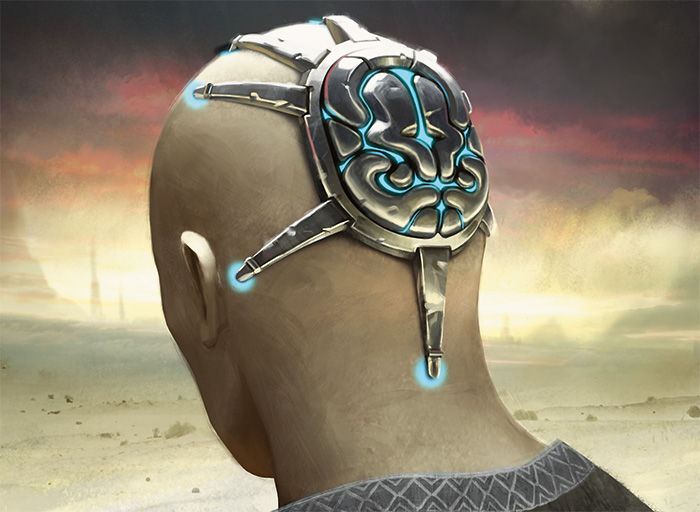
One final card I want to point out is Spore FrogSpore Frog. Spore Frog doesn't really fit into any of these categories, but it represents a cheap and reusable FogFog that can give our opponents headaches. If we're still building our board, we can easily sit behind Frog and dare our opponents to waste their attack in our direction. While it may seem innocuous at first glance, the Frog is nothing to be trifled with, and savvy opponents will be trying to find a permanent solution for it immediately.
Typically, my articles feature a cut list to describe cards that narrowly missed making it into my deck. However, given the customizability of Karador and related reanimation strategies, I'm not going to include one here. If you feel my deck needs more draw power, or a bigger top end, or more ramp, check out Karador's EDHREC page for some ideas. Ultimately, it's hard to go wrong with a suite of abilities like Karador's.
The Combo List
Because I'm not including a cut list this week, I want to briefly look at the combos that are included in this deck. I'm not going to go into a lot of detail, as the combos that are included are pretty standard fare for the Commander format, but I feel like they're worth addressing for those uninitiated.
I would like to reiterate that the primary focus of this deck is NOT combos. But having the option to assemble 3-4 pieces and win the game is quite appealing when the game has dragged on too long, if your opponents are threatening to kill you, or if the board has simply degraded to the point that winning via combat isn't within the realm of possibility.
Dead on Arrival
View on Archidekt- 1 Blood ArtistBlood Artist
- 1 Saffi EriksdotterSaffi Eriksdotter
- 1 Zulaport CutthroatZulaport Cutthroat
- 1 Fiend HunterFiend Hunter
- 1 Karmic GuideKarmic Guide
- 1 ReveillarkReveillark
- 1 Sun TitanSun Titan
Generally speaking, we're looking to assemble a situation in which we're creating infinite death triggers. For instance, if we have Karmic GuideKarmic Guide in the graveyard, we can sacrifice ReveillarkReveillark to bring back Guide, and then we can use Guide's ability to bring back Reveillark. Then sacrifice Guide, sacrifice Reveillark, and repeat.
This sort of loop is also possible with Saffi EriksdotterSaffi Eriksdotter + Sun TitanSun Titan, and Fiend HunterFiend Hunter + Sun TitanSun Titan.

Once we have two of these creatures that can create a reanimation loop, we need a free sac outlet. Ashnod's AltarAshnod's Altar and the previously mentioned Altar of DementiaAltar of Dementia work, and so does Viscera SeerViscera Seer.
Finally, we need a creature to reward us for our creatures dying. Blood ArtistBlood Artist and Zulaport CutthroatZulaport Cutthroat will both kill a table once we've assembled an infinite loop, and Altar of DementiaAltar of Dementia will kill the table if it's the sac outlet used. It's worth noting that if Viscera Seer is our outlet, and we're missing a Blood Artist or Zulaport Cutthroat, we can use our infinite Scrys to effectively tutor one of these to win the game.
Karador can help you assemble the pieces from the graveyard, and we're running enough tutors that if you're under the gun to assemble a combo, you should have a means of doing so.
These combos require a lot of moving pieces, and if you're opponents have played Commander for awhile, they'll be able to quickly identify what you're up to. The downside is that your opponents will have ample opportunity to disrupt you, but the upside is that your opponents can't really be too upset if they let you piece one of these combos together.
Ultimately, my mantra remains the same: with powerful combos comes great responsibility.
Wrapping Up
Thank you all for tuning in again to The Knowledge Pool! I hope you enjoyed reading about one of my favorite commanders in preparation for Halloween!
Next time we'll finish up my mini series on Lands, and in the near future I'm looking forward to presenting a budget deck a friend of mine recently put together.
Until then, I wish you all the best and happy brewing!
Scot Sutton
I'm a Timmy that loves Green, Creatures, and Lands. I prefer controlled smashing, and best associate with the Temur colors. I've been playing commander since 2012, and I spend my free time brewing decks and exploring new strategies. I'm also a sports nut, and follow baseball, football, hockey, and soccer in detail.
Your opinions are welcome. We love hearing what you think about Magic! We ask that you are always respectful when commenting. Please keep in mind how your comments could be interpreted by others. Personal attacks on our writers or other commenters will not be tolerated. Your comments may be removed if your language could be interpreted as aggressive or disrespectful. You may also be banned from writing further comments.
